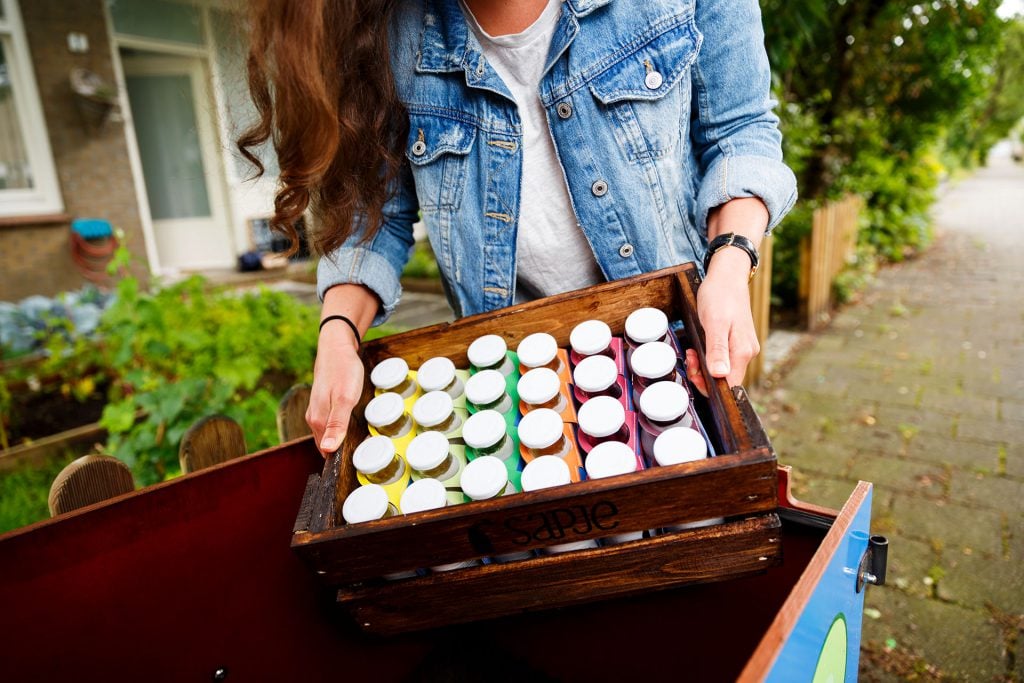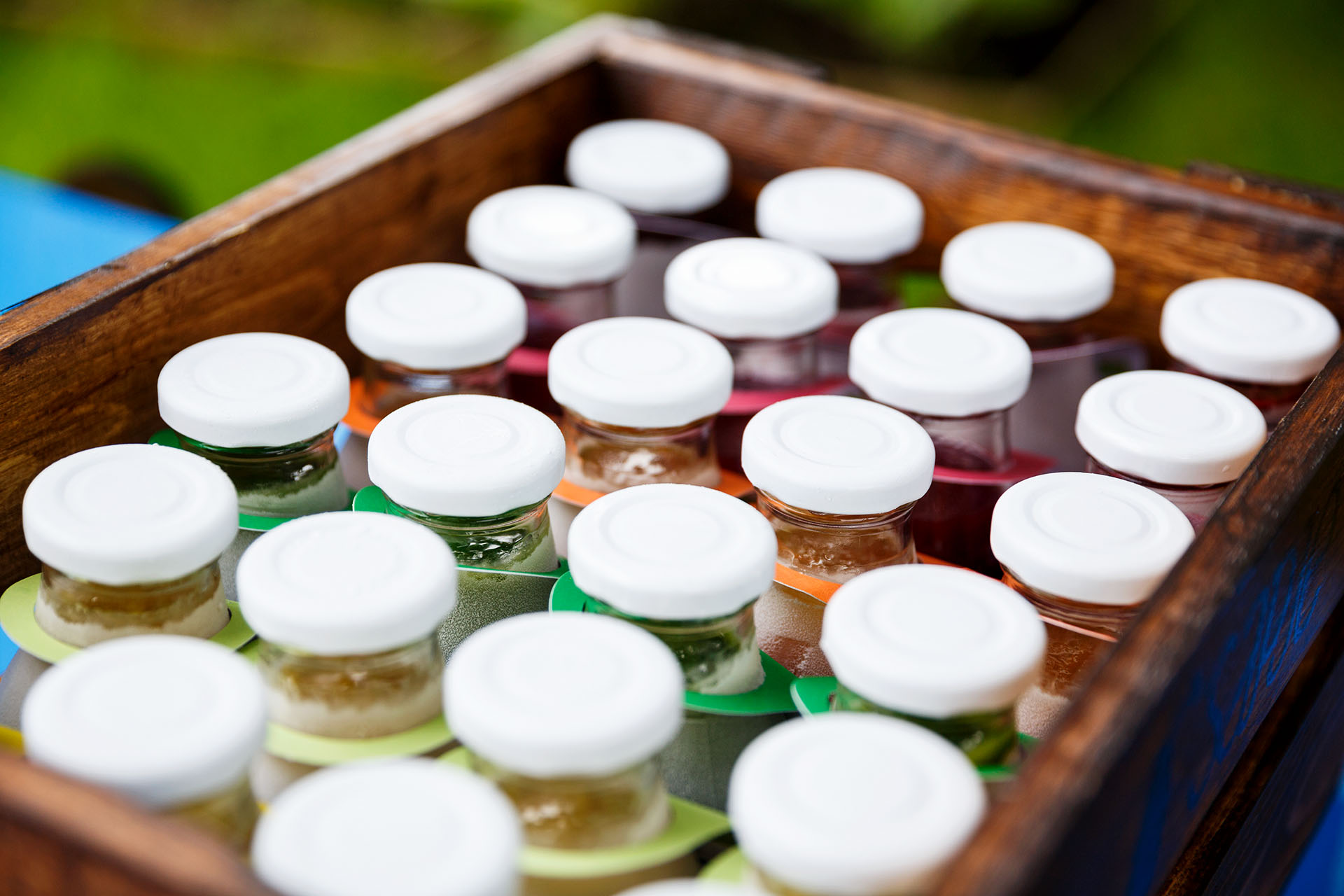At Sapje, we do everything we can to make sure our vegetable juices are as fresh as possible when they arrive at your home. We do this by freezing the juice in the shockfreezer soon after juicing. This means that the colour, taste and aroma, as well as the many nutrients, are preserved in the best possible way. We have discovered that freezing juice yields the highest quality; even better than if we were to deliver it fresh. Read on and find out why!
BUT FIRST: WHAT IS PRESERVING ANYWAY?
Preservation is the name for various methods that can be used to make food products last longer. To achieve this goal, microorganisms such as bacteria, fungi, viruses and yeasts need to be combated. This can be done in various ways, such as heating (pasteurising), cooling or freezing food, adding preservatives or exposing it to very high water pressure (high-pressure processing or pascalisation). Other methods include adding a lot of salt, acid or sugar, but because this is at the expense of taste and health value, we immediately rejected them. In addition, we strive for a product that is as pure as possible, so adding preservatives was not an option for us. Read more about pasteurisation, high-pressure processing and freezing below.
PASTEURISATION
Pasteurisation is a way to make juices last longer by heating them. Usually, the liquid is heated to a temperature higher than 72 degrees Celsius for a short time. This is a good way to kill fast-growing bacteria, but some bacteria can survive being heated. As a result, pasteurised juice can only be kept for a certain period of time and must be kept cool. Another disadvantage of this method of preservation is that it alters the cell structure of the juice and leads to the loss of certain vitamins, minerals and enzymes. Because we want to conserve as many nutrients as possible from our fresh vegetables, we did not think pasteurisation was the best method.
HPP (HIGH-PRESSURE PROCESSING, OR PASCALISATION)
HPP is a fairly new method of preservation that uses large machines to expose food products to very high water pressure. Most microorganisms such as bacteria and moulds cannot withstand this high pressure and die. But this may also apply to healthy organisms, nutrients and enzymes. You can find more and more juices that have undergone HPP in supermarkets. These are advertised as ‘fresh’ and can be kept in the fridge for weeks. A drawback of this method is that it can be a long time between the moment of preservation and the moment of consumption. During this period, the juice may lose a lot of nutrients due to exposure to light and oxygen, and just time passing. Usually, the nutrients have already been greatly reduced after just a few days. If you drink the juice even later, you will only be consuming empty calories. Although HPP gives better results than pasteurisation, we thought Sapje could do even better.
FREEZING (SHOCK FREEZING)
At Sapje we are convinced that freezing our juice is the best way to keep it tasty and healthy for as long as possible. After we have taken delivery of the fresh ingredients, we Slowjuice them as soon as possible. This is done in a chilled environment to prevent loss of nutrients. The juices then go straight into the shockfreezer. They are then deep-frozen in just one hour. Freezing ensures that microorganisms can no longer grow: time actually comes to a standstill. When frozen, the juices can stay fresh for up to a year. The vitality of frozen organisms is also preserved naturally. Once they are thawed, our juices are therefore as tasty and healthy as they were just after juicing. Of course, it is important to drink them as soon as possible after thawing in order to make the most of them. The only thing better than frozen juices are fresh juices that you have squeezed at home to drink immediately. If you don’t have the time or energy to do that, our juices are the best alternative!
WHY NOT DELIVER FRESH?
When we just started making fresh vegetable juices and juice cleanses, we delivered them fresh to a small group of interested people in the neighbourhood. That worked well when we could use the delivery bike, but when our clientele started to grow, we had to find another solution. Our customers are now spread all over the Netherlands and Belgium, which means that the juices are on the road for longer. If we were to deliver them fresh, they could already have lost their nutritional value due to exposure to light and oxygen, and time on the road. Moreover, they should be drunk immediately upon arrival for the best results. However, that would make it harder to order more than one bottle at a time, which is what makes our service so easy to use and sustainable. The larger your order, the fewer deliveries we have to make. You can keep the frozen bottles in your freezer until you have time to enjoy them and you will always have fresh vegetable juice when it suits you!


